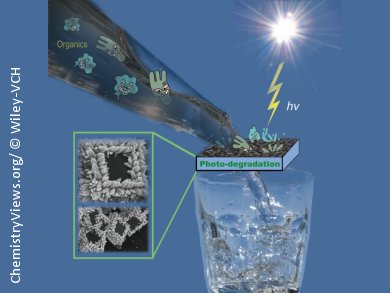The degradation of organic pollutants present in air and water can be achieved through the use of semiconductor photocatalysts. Anatase TiO2 and wurtzite ZnO have both shown photocatalytic activity in their own right.
Hua Gui Yang and his teams, East China University of Science and Technology, Shanghai, China, and colleagues have looked to combine these two materials to form a ZnO/TiO2 heterojunction semiconductor photocatalyst.
They have discovered a method whereby highly reactive ZnO can be selectively grown on the {101} facets of TiO2, which have low reactivity, leaving the highly reactive {001} facets of the TiO2 untouched.
In photocatalytic experimenents these ZnO/TiO2 heterojunctions exhibited a considerably higher activity than that of a physical mixture of the two materials. This enhanced activity can be attributed to improved charge separation, a prolonged lifetime of photogenerated charge carriers, and an extended photoresponsive range of these nanojunctions.
- Fabrication of Regular ZnO/TiO2 Heterojunctions with Enhanced Photocatalytic Properties,
L. Wu, J. Xing, Y. Hou, F. Y. Xiao, Z. Li, H. G. Yang,
Chem. Eur. J. 2013.
DOI: 10.1002/chem.201300849




